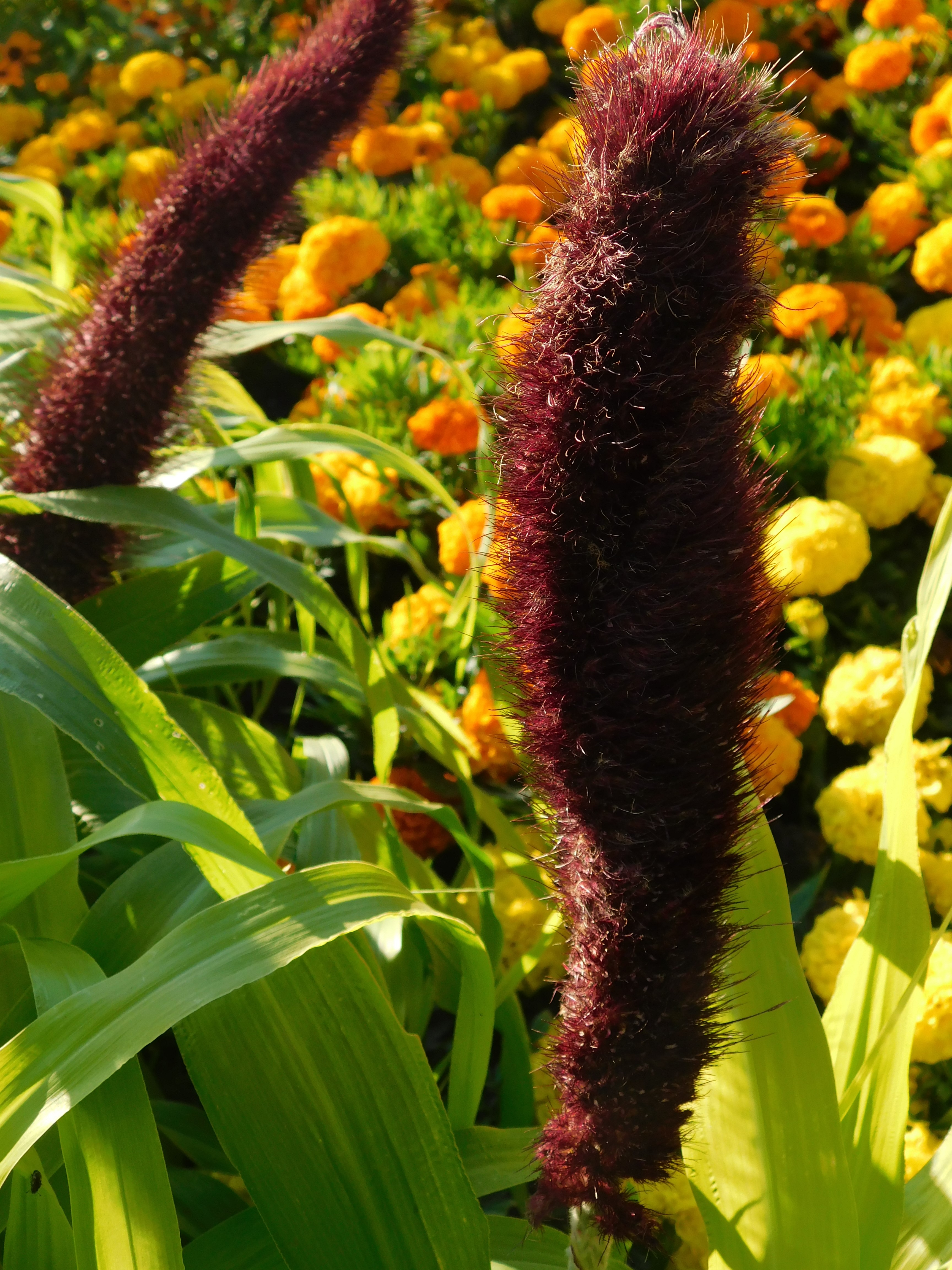By Sandra Nelson
This week’s pick is by Sandra Nelson, Blog Writer
Ornamental Millet
“The vibrant color and strong structure are hard to beat, but watching dozens of goldfinches vying to devour the seed heads in the fall is enchanting.”
What began as one of the world’s oldest cultivated grains, is rapidly becoming prized for its ornamental value. Ornamental millet is perfect as massed accent plants or in containers. These tough plants thrive in hot summer temperatures and full sun. In fact, they prefer temperatures of 91 to 95 degrees F, and the more light they receive, the stronger their stems will be. Ornamental millet varieties are not overly fussy about soil type as long as it is well-drained. With their spreading root systems, they are drought tolerant, but will produce more and fuller foliage with consistent watering and periodic fertilization. Millet is rarely bothered by insects or diseases. Plants are becoming common at nurseries and garden centers; be sure to wait until the soil warms before planting them. They can also be direct seeded into the garden, but they may not reach full maturity in areas with short growing seasons.
Depending on the variety you choose, plants vary from 2 to 5 feet in height. Most varieties are upright and highly structural in nature. Jade Princess however, has a graceful, arching growth habit. Foliage colors range from shades of green and chartreuse to burgundy and deep purple. Flower spikes, which appear toward the middle to latter part of summer, bloom in shades of creams and purples. Deadheading the flower spikes before they turn to seed will encourage re-blooming, but leaving seed heads to mature on the stalk gives an added bonus. Small birds, especially goldfinches, will cling to the stalks and greedily devour the seeds, fiercely protecting their territory. (For those who are concerned about re-seeding, millet seed does not survive cold winters so any seed that the birds leave behind should not overrun the garden in the future.)
Companion Colors: bright orange, yellow, pink and silver foliage plants (Dusty Miller)




